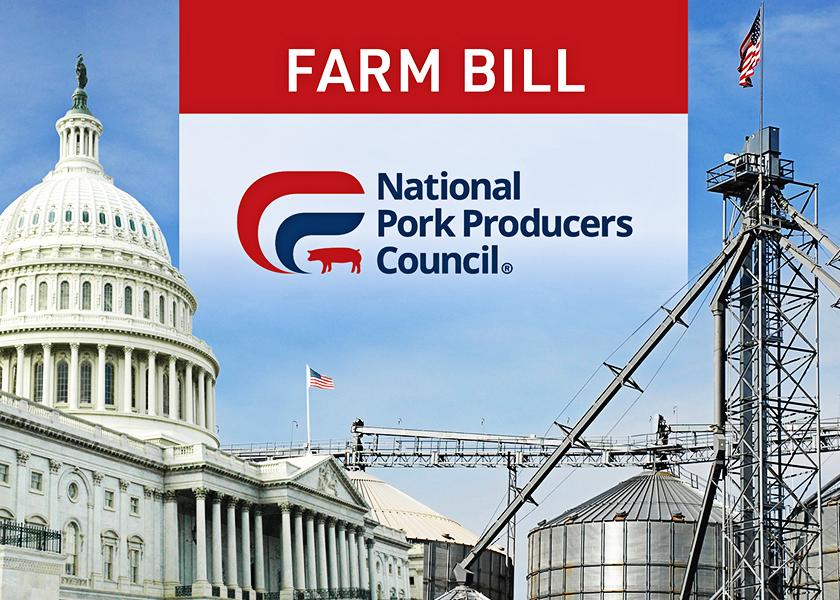The Cost of a Farm Bill: 2023 Pork Priorities

The 2018 farm bill was stamped with a $428 billon price tag when the bill was passed. Nutrition, crop insurance, commodities, trade and conservation programs were among the programs to receive the most funds.
With the 2018 bill set to expire on Sept. 30, the Congressional Research Service last May released baseline spending for the same programs starting in the 2023 farm bill. The baseline shows a decrease in commodities and conservation, while nutrition, trade and crop insurance increased.

As the debate heats up, here’s a breakdown of what National Pork Producers Council (NPPC) looks to push on the 2023 farm bill negotiating table:
1. Foreign Animal Diseases (FADs)
Highly pathogenic avian influenza and African swine fever (ASF) are heavy on the minds of producers, as the two FADs have spread like wildfire around the globe. While USDA has set a border barrier to prevent the disease from entering the States, NPPC isn’t willing to wait for news headlines to take more action.
“We want to work first and foremost on prevention,” says Terry Wolters, NPPC president. “We’re looking to dedicate more funding in the next farm bill to resources like animal health laboratories and diagnostic facilities.”
According to Wolters, NPPC—like most ag groups—is looking to “maintain” 2018 FAD supports and bring funding to levels that reflect today’s costs.
2. Resources for Disease Response
APHIS’ African swine fever program, Protect Our Pigs, offers education, zoning, surveillance and assessments at borders. But is that enough? Wolters isn’t convinced.
“We want to provide adequate resources to producers to be able to respond in the event that we would have an unfortunate outbreak of an animal disease or foreign animal disease,” says Wolters.
Help developing those strategies may be just around the corner at the University of Minnesota.
A recent U of M study on a surrogate ASF virus sheds light on the disease’s ability to withstand high temperatures in feed ingredients and complete feeds. The results suggest current biosecurity protocols may be insufficient, further underscoring NPPC’s concerns.
“This is a major breakthrough to reach our goal of accelerating research for understanding the survival of ASF in various feed ingredients and complete feeds, as well as evaluating the effectiveness of various mitigation strategies to inactivate ASF in feed,” says Gerald Shurson, U of M professor and lead researcher.
On the farm bill front, Wolters says NPPC plans to work with legislative officials to continue funding for work like that at U of M.
“We want to find or create a way to add more control in an environment [animal disease] that has proven, in some ways, uncontrollable,” says Wolters.
NPPC is also planning to add more certainty for producers in the 2023 farm bill through trade.
3. Market Access
COVID-19 exposed broken supply chain links that sent shockwaves down the pork industry. Wolters says it’s time to solder those chains back together for good.
“Plants, shutdowns and lack of market access became a clear, top-of-mind issue for producers in the past few years. Our producers want assurances that can be targeted at catastrophic events,” Wolters says.
NPPC, according to Wolters, will be pushing for greater market access through:
• Traceability—animal identification support
• Federal funding stockpiles
• A subsidized, basic insurance program
"The farm bill affects the entire food supply chain," Wolters says. "We need to encourage bipartisanship in Congress so we can press on with the farm bill to get it completed. We owe it to our producers."







